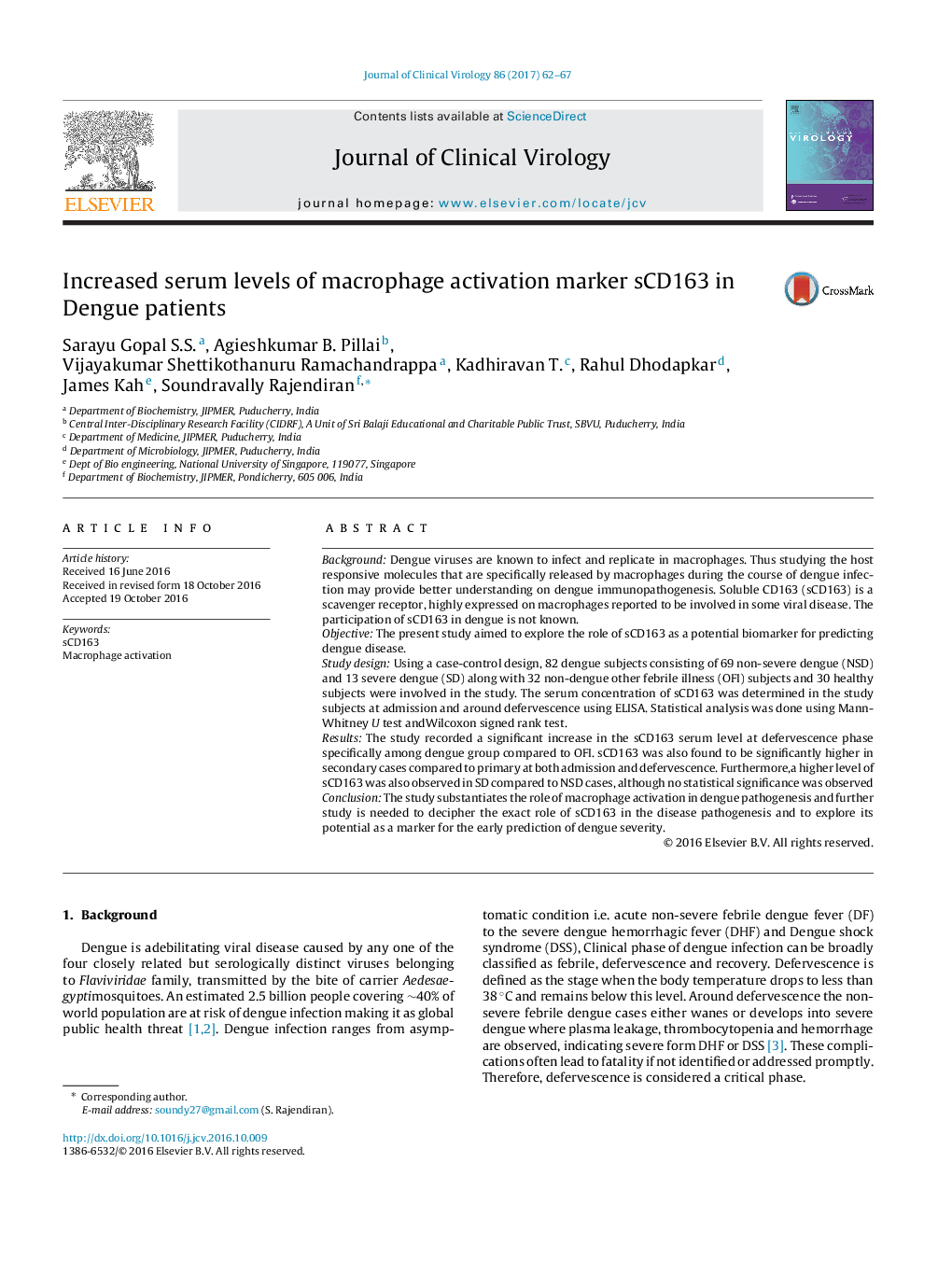| Article ID | Journal | Published Year | Pages | File Type |
|---|---|---|---|---|
| 5668026 | Journal of Clinical Virology | 2017 | 6 Pages |
â¢The current study proposed the importance of sCD163, a macrophage activation marker in dengue.â¢The sCD163 levels are significantly elevated during the defervescence stage of dengue disease.â¢The increase in sCD163 during defervescence alarms the critical digressions of dengue pathology thus helps in prevention of complications.
BackgroundDengue viruses are known to infect and replicate in macrophages. Thus studying the host responsive molecules that are specifically released by macrophages during the course of dengue infection may provide better understanding on dengue immunopathogenesis. Soluble CD163 (sCD163) is a scavenger receptor, highly expressed on macrophages reported to be involved in some viral disease. The participation of sCD163 in dengue is not known.ObjectiveThe present study aimed to explore the role of sCD163 as a potential biomarker for predicting dengue disease.Study designUsing a case-control design, 82 dengue subjects consisting of 69 non-severe dengue (NSD) and 13 severe dengue (SD) along with 32 non-dengue other febrile illness (OFI) subjects and 30 healthy subjects were involved in the study. The serum concentration of sCD163 was determined in the study subjects at admission and around defervescence using ELISA. Statistical analysis was done using Mann-Whitney U test andWilcoxon signed rank test.ResultsThe study recorded a significant increase in the sCD163 serum level at defervescence phase specifically among dengue group compared to OFI. sCD163 was also found to be significantly higher in secondary cases compared to primary at both admission and defervescence. Furthermore,a higher level of sCD163 was also observed in SD compared to NSD cases, although no statistical significance was observedConclusionThe study substantiates the role of macrophage activation in dengue pathogenesis and further study is needed to decipher the exact role of sCD163 in the disease pathogenesis and to explore its potential as a marker for the early prediction of dengue severity.
